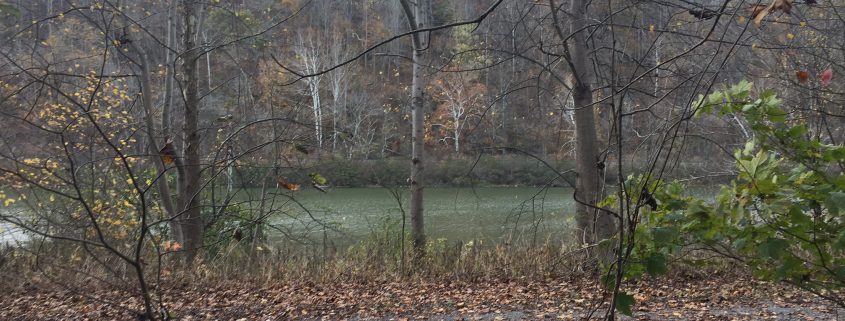Summer-Like November Hike Along the Mon-River Rails-to-Trail
I hiked six-and-one-half miles along the Monongahela River Rails-to-Trail November 5, 2017, near Prickett’s Fort State Park. The temperature of 77 degrees masked the season. Leaves have mostly dropped, attributable to photo-period and evolved seasonal habit. We have not yet had a killing frost here in North-Central West Virginia.
We’ll call this hike an escape to Nature. At 52-minutes out, walking at a little faster than four miles per hour (yeah, I timed a bit over 14 minutes between measured miles), I sat leaning against a large yellow poplar (Liriodendron tulipifera for the Latin hardcore).
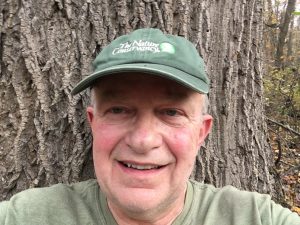
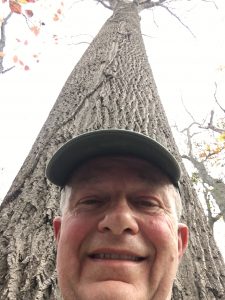
The Featured Image looks across the river from where I rested. A pleasant respite from a warm hike. I note a thin vine clinging above my head. Interestingly, such aerial navigators generally grow vertically with the tree, matching the 100-foot-plus poplar foot-by-foot as the tree extended its leader a little higher each season.
Man has left deep footprints along the Mon.
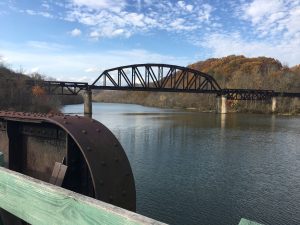
View from the Trail — a still-active rail line that crosses over the R-to-T.
Yet, the trail reveals beauty along the quiet river.
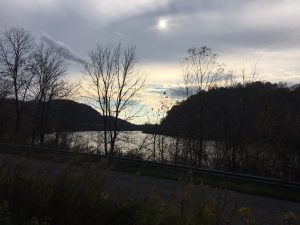
Tranquility dominates.
Just 300 feet down-river (to the right in the photo above), man exhibits his capacity for spoiling splendor and plundering plenty. Homo sapiens — such an odd species, too often content to foul our own nest.
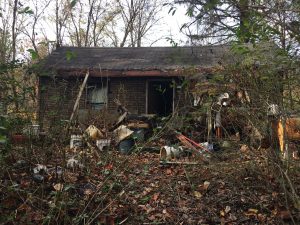
An abandoned cabin on a bluff above the magnificent river.
I found my hike therapeutic. Nursing an upper respiratory bug, and spending a weekend alone with Judy back in Alabama for three weeks, I needed to leave the computer keyboard for a while. To add a little fuel to my Nature-powered engine. To inject a bit of Earth Stewardship passion into this week’s GBH Blog post. I occasionally know my topic ahead of the Tuesday morning posting. My hike made this one easy. Nature and Human Nature spin in and out of paradox and irony — harmony and contrast. The ramshackle cabin the peaceful river brought an Aldo Leopold quote to mind, from A Sand County Almanac: “All conservation of wildness is self-defeating, for to cherish, we must see and fondle, and when enough have seen and fondled there is no wilderness left the cherish.” This river attracts many who like to be near it, yet who have little sense of our individual and collective obligation to practice an informed land ethic.
I am committing my life through Great Blue Heron to promote an Earth Stewardship ethic, and to help individuals and enterprises harness Nature’s wisdom and power. My daily reflections desktop calendar offered a message the day of my hike… a message clearly inspired by Nature: “No man ever steps in the same river twice, for it’s not the same river and he’s not the same man.” Heraclitus. Like life, the river flows ever toward its rendezvous with the sea. Never does the same water pass again by any one shoreline post. I have walked along scores of rivers hundreds of times. I’ve transited 66.5 years, myself ever-changing, growing from a boy to a man, and then another man, and another as the years changed me. I see life, living, and Nature through a maturing mind, body, heart, soul, and spirit.
Nature opens all my portals — rewards every step, enriches every breath, and encourages thought and reflection like nothing else can. Great Blue Heron can help you engage your portals to open new horizons and discover possibilities that lie hidden within you and your enterprise.

